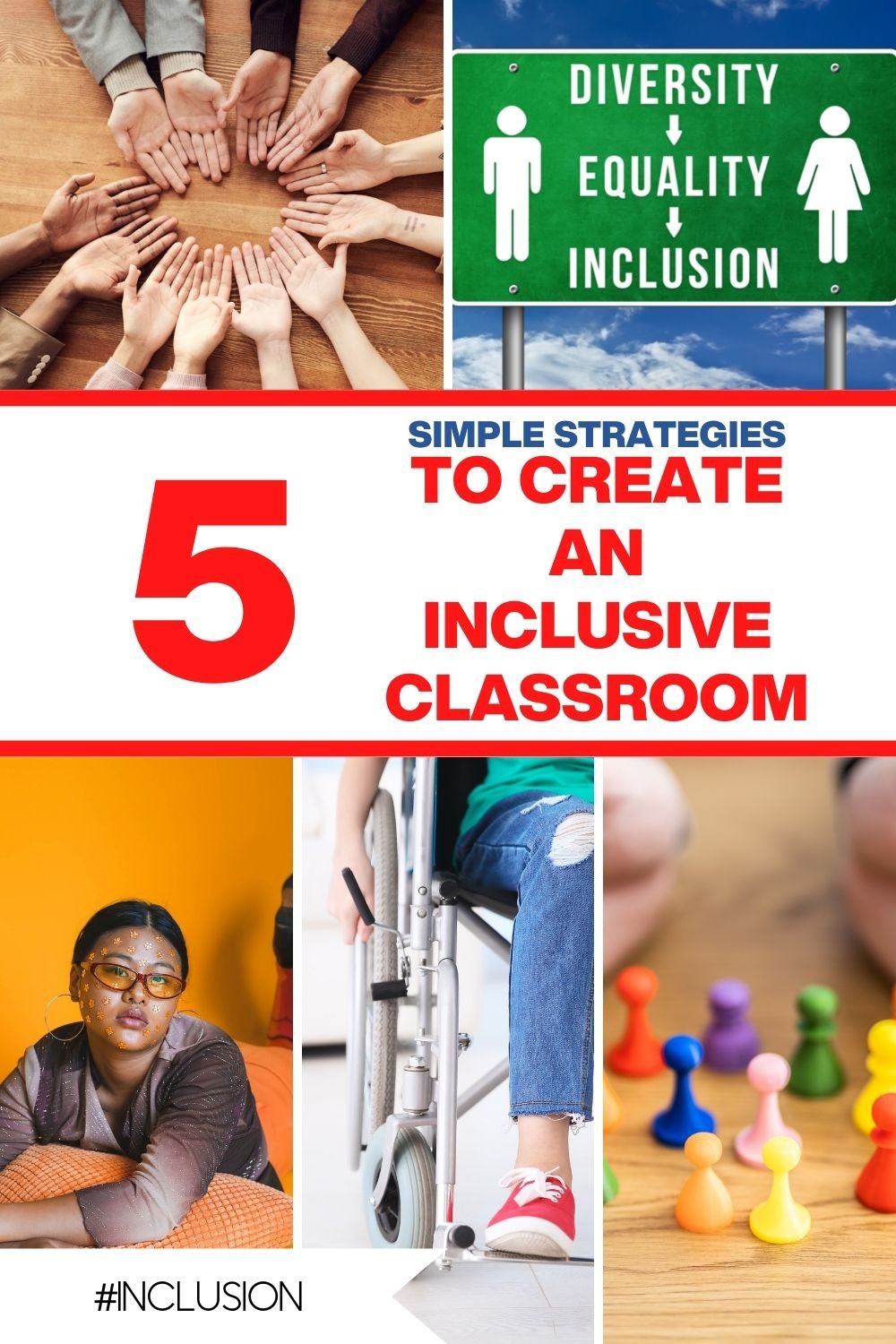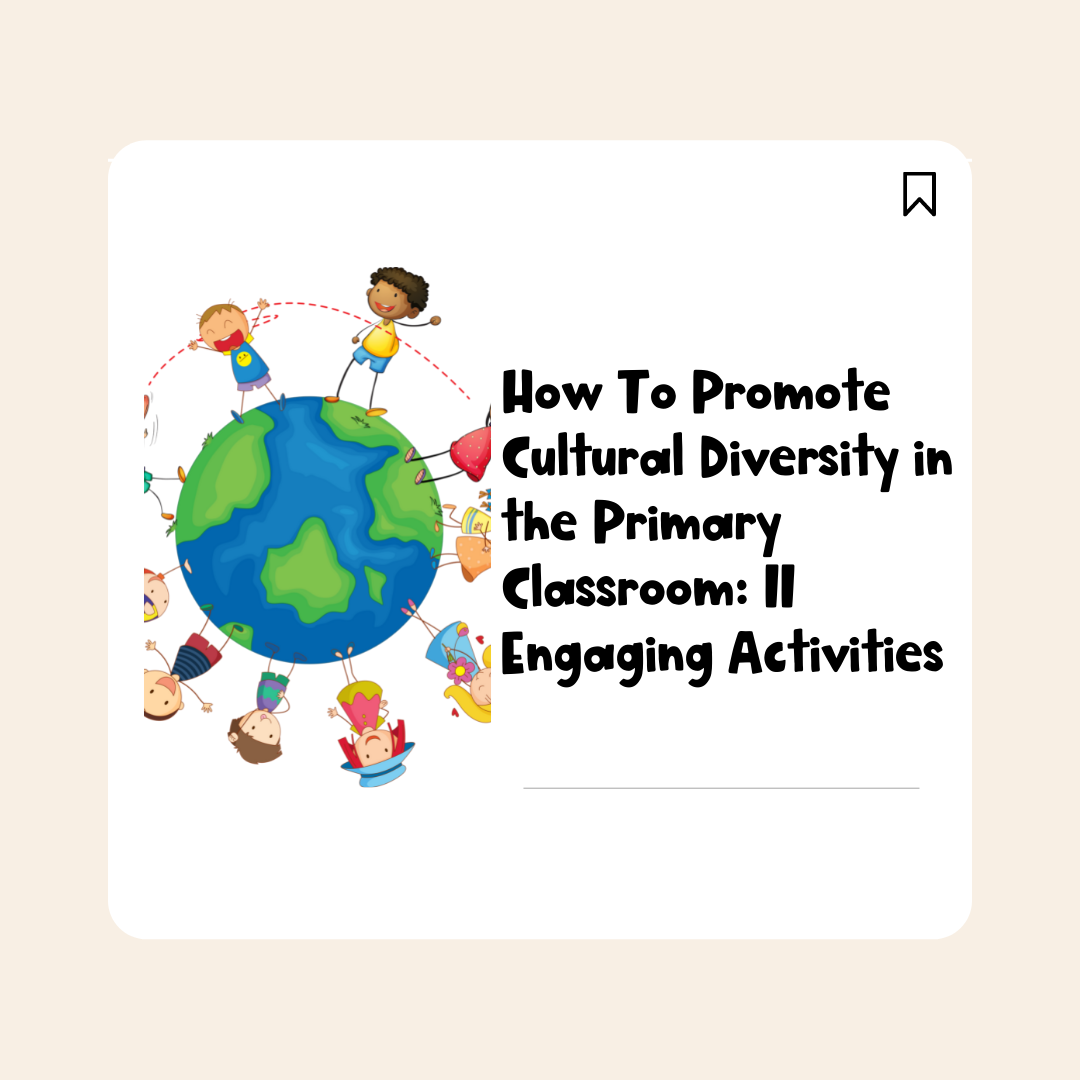Inclusive Classroom Activities: 5 Simple Strategies
Five easy inclusive activities you can implement in your early childhood classroom today that will help you create a warm and empathetic classroom. Every child deserves to feel welcome at school no matter their race, ethnicity or culture. I’m so excited to share these inclusive strategies with you!
How to make your classroom inclusive
I don’t know about you but when I grew up schools were pretty much centralized on Christian holidays (and still kind of are). I knew that some families didn’t celebrate Christmas and honestly I felt bad for those kids! I couldn’t believe they were “missing out” on the most wonderful time of year. I thought they must be so sad at home knowing that their friends were decorating Christmas trees, hanging up stockings and opening presents. Little did I know that those families had their own traditions!
Maybe they were celebrating Hanukkah or Kwanzaa. Maybe their celebrations happened during the school year and they didn’t talk about it much. Eid happens during the school year and guess what, since our school calendar is based off of Christianity usually there’s no time “off.”
To be honest, even when I first became a teacher I could not imagine NOT doing a Christmas concert at school. I felt that singing only Winter songs was annoying. I’ve since changed my tune (no pun intended - ok fine the pun was totally intended). There are so many songs about snow and snowflakes that theres really no need to make your whole class sing a religious song. Can you tell I’m writing this post in December?
I’m going to go over 5 ways you can make your classroom more inclusive because every child deserves to feel welcome!
Inclusive practices in the Primary Classroom
Celebrate diversity with conversation starters
Conversations help students talk about themselves in a low-key, no-pressure kind of way. They can talk about their families, what they like to do for fun, what their favourite foods are, what family traditions they have… There’s so much to talk about! Kids LOVE talking about themselves and these conversation starters can help them see that everyone is different and special in their own way. Need help thinking of diversity conversation starters?
Use flexible seating
Give students a chance to sit in a seat that is comfortable for them. Pillows, benches, bicycle tables, mats and Ikea egg chairs are great options. Not only is flexible seating great for promoting a socially inclusive classroom, giving children the opportunity to connect with each other, but it also helps children with diverse learning needs. It isn’t always the most comfortable to be sitting at a desk! Some students may actually get more work done when their bodies feel more comfortable.
Teach about what diversity actually means with this Diversity Unit for Kindergarten and Grade 1
I’ve created an entire unit on diversity and hope that it helps teachers teach about anti-racism in their classrooms. My goal is to help children understand and appreciate their differences and see how our differences make our world a special place. You can read all about how I teach about diversity in this blog post.
Celebrate family traditions
Traditions are great because they don’t necessarily need to be tied to a child's ethnicity or religion but they can be, and either way is totally fine! Have each family send in a picture of one of their family traditions and make it into a bulletin board display. Someone’s tradition might be that they like to go skating each Winter, or they make their own pretzels from scratch, they help their mom make her morning coffee, or they go camping each summer. It’s fun to see what traditions everyone has! The kids can make connections with each other over their traditions while also learning about other cultural traditions. We learn so much about each other when we talk about the traditions and holidays we celebrate.
Family Photo Wall
This is a must for me every year! I have each family send in a family photo. If it makes it easier, I get them to email me the picture and I print it out. I totally get it, families are busy! The family wall is great because when students (especially Kindergarteners) are missing their families, they have a picture of their loved ones to look at. I also love that if you have a diverse class, students can see what their peers’ families look like. They can notice similarities and differences in everyone’s physical appearances while appreciating that no matter what a family looks like, it is full of love. When discussing family it is a good opportunity to talk about what different family structures are like. I have a blog post on LGBTQ picture books you can use in your classroom. My favourite is the Family Book by Todd Parr. Always a goodie.
Inclusive classroom strategies
These 5 tips are a great way to get started in creating an inclusive early childhood classroom. Which activities will you choose? Let me know in the comments!
-Breyen
Follow me on Instagram @ouimadamewee












